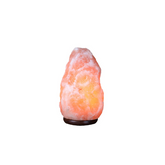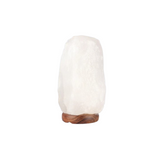Himalayan Salt for Muscle Recovery After Workouts
Himalayan Salt for Muscle Recovery After Workouts
Post-workout recovery is just as important as the workout itself. Whether you’re lifting weights, running, or doing yoga, your muscles undergo microtears that need time and nutrients to heal. One natural method gaining popularity among athletes and wellness enthusiasts is using Himalayan salt for muscle recovery. Rich in electrolytes and trace minerals, this ancient pink crystal can help replenish the body, reduce soreness, and speed up recovery especially when used in baths and soaks.
This article explores how Himalayan salt supports muscle recovery after workouts, its mineral benefits, the science behind salt baths, and how to integrate them into your fitness routine.
What Happens to Muscles After Exercise
When you exercise, especially with high intensity, your muscle fibers experience microscopic tears. These tears trigger an inflammatory response that helps muscles grow stronger. However, they also cause soreness, stiffness, and fatigue known as Delayed Onset Muscle Soreness (DOMS).
Key Factors in Muscle Recovery
- Electrolyte Replenishment: Sodium, potassium, and magnesium are essential for muscle contraction and hydration.
- Detoxification: The body eliminates lactic acid buildup that causes soreness.
- Relaxation: Calming muscles and nerves is crucial to reduce inflammation and tension.
This is where Himalayan salt baths can play a powerful role in your recovery process.
Why Himalayan Salt Helps in Muscle Recovery
Himalayan salt, mined from the Khewra Salt Mine in Pakistan, is renowned for its purity and mineral richness. It contains over 80 trace minerals, including sodium, magnesium, calcium, and potassium all essential for restoring electrolyte balance and promoting muscular healing.
Mineral Benefits Breakdown
| Mineral | Function in Recovery |
|---|---|
| Sodium | Replenishes lost electrolytes and maintains hydration |
| Magnesium | Relieves muscle cramps and supports relaxation |
| Calcium | Assists in muscle contraction and bone health |
| Potassium | Prevents stiffness and supports nerve function |
These minerals, when absorbed through the skin in a salt bath, can ease soreness, relax the nervous system, and accelerate healing.
The Science Behind Salt Baths and Soaks
Although Himalayan salt baths are often viewed as a traditional wellness ritual, emerging evidence supports their physiological effects. Warm saltwater creates a process called osmosis, where toxins are drawn out of the skin while minerals are absorbed.
Benefits of Himalayan Salt Baths
- Reduces muscle inflammation: Warmth increases blood flow, and the minerals assist in cellular repair.
- Balances electrolytes: The minerals replenish what’s lost through sweat.
- Detoxifies the skin: Helps remove impurities and lactic acid buildup.
- Relieves tension: The warmth calms nerves and relaxes muscles for better rest.
🧠 Tip: Combining a Himalayan salt bath with stretching or foam rolling enhances recovery and flexibility.
How to Use Himalayan Salt for Muscle Recovery
Incorporating Himalayan salt soaks after workouts is simple yet transformative.
Step-by-Step Guide for a Himalayan Salt Bath
- Fill your bathtub with warm (not hot) water.
- Add 1–2 cups of Himalayan bath salt to the water.
- Stir well until dissolved.
- Soak for 20–30 minutes. Focus on slow breathing to enhance relaxation.
- After the bath, rinse with plain water and hydrate with a mineral-rich drink.
💡 If you don’t have a bathtub, try a Himalayan salt foot soak it offers similar recovery benefits by stimulating reflex points in the feet.
DIY Recovery Recipes
1. Post-Workout Muscle Recovery Bath Mix
- 1 cup Himalayan salt
- ½ cup Epsom salt
- 10 drops eucalyptus essential oil
- 5 drops peppermint oil
How it helps:
This blend combines magnesium sulfate (from Epsom salt) with Himalayan salt minerals, easing inflammation and muscle tightness.
2. Cooling Salt Compress
Mix 2 tablespoons of Himalayan salt in a bowl of cold water. Soak a towel, wring it out, and apply to sore areas for 10 minutes.
Comparing Himalayan Salt vs. Epsom Salt
| Feature | Himalayan Salt | Epsom Salt |
|---|---|---|
| Main Minerals | Sodium, Calcium, Magnesium, Potassium | Magnesium Sulfate |
| Benefits | Detox, electrolyte balance, hydration | Muscle relaxation, pain relief |
| Best For | Full-body recovery and mineral replenishment | Deep muscle cramps and acute soreness |
Both salts complement each other. Using them together in a post-workout bath maximizes electrolyte replenishment and muscle recovery.
When to Take a Himalayan Salt Bath
- After intense training: Within 1–2 hours post-exercise helps reduce soreness.
- On rest days: Once or twice a week to maintain mineral balance.
- Before sleep: Enhances relaxation and improves sleep quality.
Avoid taking salt baths immediately before exercise, as they can lower energy levels temporarily.
Expert Insight: Electrolytes and Recovery
Dr. Michael L. Gleeson, a sports nutrition expert, emphasizes that electrolyte loss during exercise is one of the key causes of post-exercise fatigue and cramps. Replenishing minerals through both dietary intake and transdermal absorption (such as salt baths) supports faster recovery and reduces inflammation.
(Source: Journal of Sports Science & Medicine, 2021)
People Also Ask
1. Does Himalayan salt really help sore muscles?
Yes. Its minerals improve circulation, reduce inflammation, and relax tense muscles.
2. Can I use Himalayan salt instead of Epsom salt?
Absolutely. Both salts help recovery, but Himalayan salt offers broader mineral support.
3. How often should I take salt baths?
2–3 times a week is ideal for active individuals. Adjust frequency based on training intensity.
4. Can Himalayan salt baths help joint pain?
Yes. The minerals can soothe stiffness and support natural anti-inflammatory processes.
Safety and Best Practices
- Stay hydrated before and after your bath.
- Avoid soaking in extremely hot water.
- Consult your doctor if you have skin conditions, hypertension, or kidney issues.
- Always use authentic Himalayan salt look for ethically sourced pink crystals from Pakistan.
Final Thoughts
Using Himalayan salt for muscle recovery after workouts is a natural, effective, and restorative practice. By soaking in mineral-rich water, you not only relieve soreness but also replenish electrolytes, detoxify your body, and promote deep relaxation.
When paired with hydration, nutrition, and adequate rest, this simple salt ritual can transform your post-workout experience.
(For broader lifestyle integration, visit our Wellness Pillar article on Daily Himalayan Salt Routines.)






